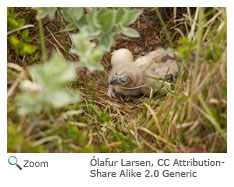Description
 A medium sized bird with yellow eyes, the short-eared owl is brown and white. Its head is white in color while its chest is streaked brown and white. The owl is often identified by its low flight patterns, as they swoop to grab prey from the ground. Males and females look alike. A medium sized bird with yellow eyes, the short-eared owl is brown and white. Its head is white in color while its chest is streaked brown and white. The owl is often identified by its low flight patterns, as they swoop to grab prey from the ground. Males and females look alike.
Range
The short-eared owl has a very large range; it is found on every continent except Australia and Antarctica! In North America, it is found throughout Alaska, Canada, the continental United States and Northern Mexico. The short-eared owl is migratory. In the summer, the owl breeds throughout Canada and Alaska. Come winter, the owl moves south, living as far south as Mexico and the Caribbean.
Habitat
 The short-eared owl likes to live in open areas like marshes and bogs. It stays in areas where it can find food, which is important because the owl has a specialized diet. The short-eared owl builds its nest on dry sites in open land. The short-eared owl likes to live in open areas like marshes and bogs. It stays in areas where it can find food, which is important because the owl has a specialized diet. The short-eared owl builds its nest on dry sites in open land.
The short-eared owl seems to benefit from strip-mining. It nests in the open areas left behind after the mining is complete.
|
|
Diet
 Unlike other owls, the short-eared owl hunts during the day. It has a very specific diet. It eats mice, voles, and other small mammals. The short-eared owl picks up its prey while in flight, using its strong beak and talons. Unlike other owls, the short-eared owl hunts during the day. It has a very specific diet. It eats mice, voles, and other small mammals. The short-eared owl picks up its prey while in flight, using its strong beak and talons.
Life Cycle
 Breeding begins in April. The female lays 4-7 white, unspotted eggs. She incubates them for three weeks. During this time, the male brings food to the female and defends the nest. Two weeks after hatching, the chicks make their first flight. After four weeks, the chicks leave the nest for good. Breeding begins in April. The female lays 4-7 white, unspotted eggs. She incubates them for three weeks. During this time, the male brings food to the female and defends the nest. Two weeks after hatching, the chicks make their first flight. After four weeks, the chicks leave the nest for good.
Behavior
 The short-eared owl has incredible hearing. It can locate and grab its prey from under thick grass or snow using only its ears! The short-eared owl has incredible hearing. It can locate and grab its prey from under thick grass or snow using only its ears!
If threatened, the short-eared owl often pretends to have a broken wing. |





